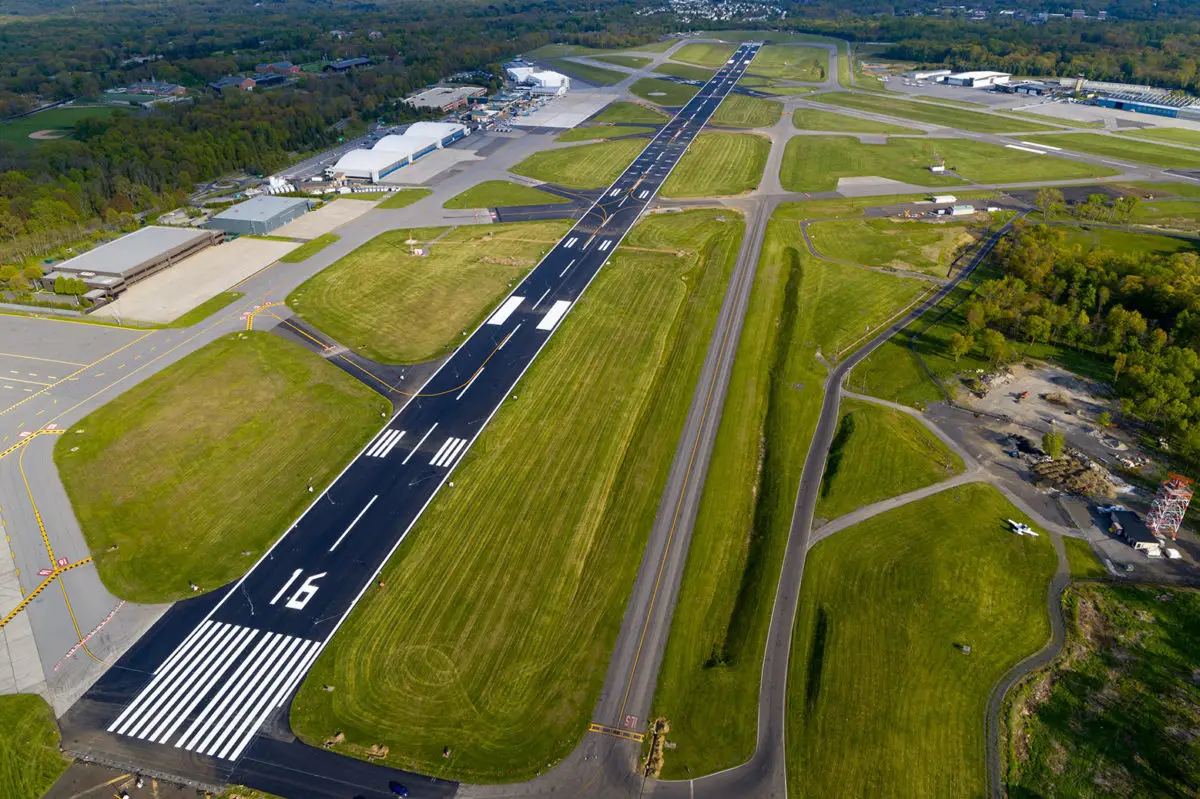The Westchester County Legislature has approved allowing the county to apply for federal funds to plan various runway improvements at the Westchester County Airport. County Executive George Latimer had recommended that the Legislature pass a measure authorizing the county to apply to the Federal Aviation Administration (FAA) for funds to cover most of the costs of planning a major runway rehabilitation project.
The project affects the airport’s main runway, 16/34, which is 6,549 feet long and 150 feet wide. The 16/34 designation refers to the runway’s directional orientation, with aircraft oriented 160 degrees when landing or taking off southbound on Runway 16 and 340 degrees when landing or taking off northbound on Runway 34.

It is estimated that the planning phase of the project would cost $636,196 and the county would hire a consultant to do the work. The FAA is asked to provide 90%, or $572,576, of the amount needed. The New York State Department of Transportation is expected to contribute $31,810 and the county would contribute the remaining $31,810.
Designs would be prepared for the following areas: replacement of lighting at the runway edges and ends, lighting of the runway centerlines and touchdown zones, raised signage, blasting areas at the runway ends, and new runway shoulder pads on both sides, including associated drainage improvements.
The capital project will be undertaken through the FAA’s Airport Capital Improvement Program, an annual, entitlement-based funding source directly tied to commercial passenger traffic. FAA funds can be used for projects that help ensure the safety of air traffic at an airport.
Planning for the county airport project is expected to be completed by March 31 next year.
Runway 16/34 was repaved and improved in the spring of 2020 as part of a $21.7 million project, with the federal government covering about $19 million of the cost. At the time, Latimer pointed out that, unlike a municipal street or highway, a runway must support the heavy weight of aircraft, withstand the stresses of landings and takeoffs, and remain free of hazards such as potholes.
